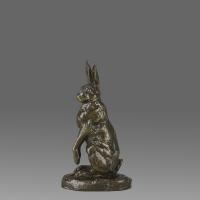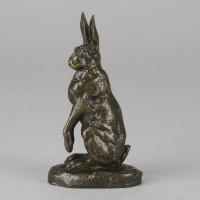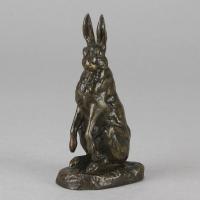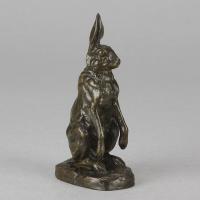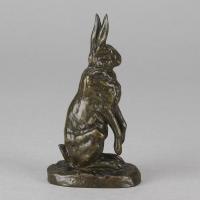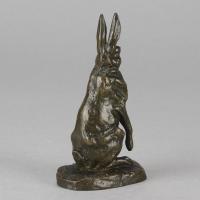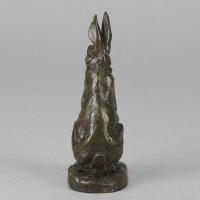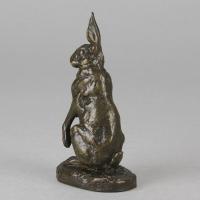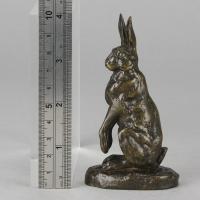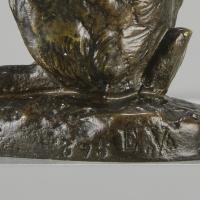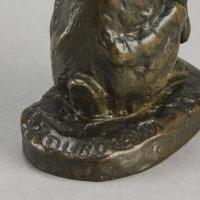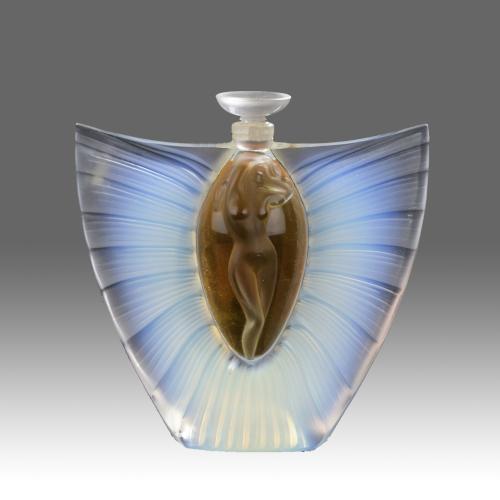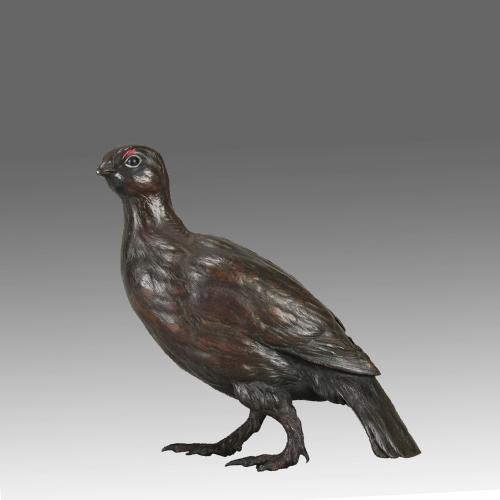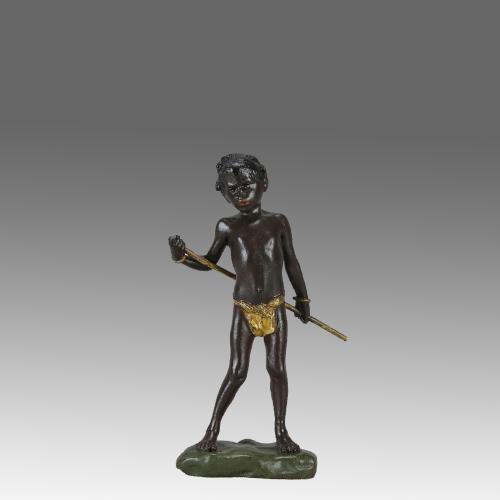
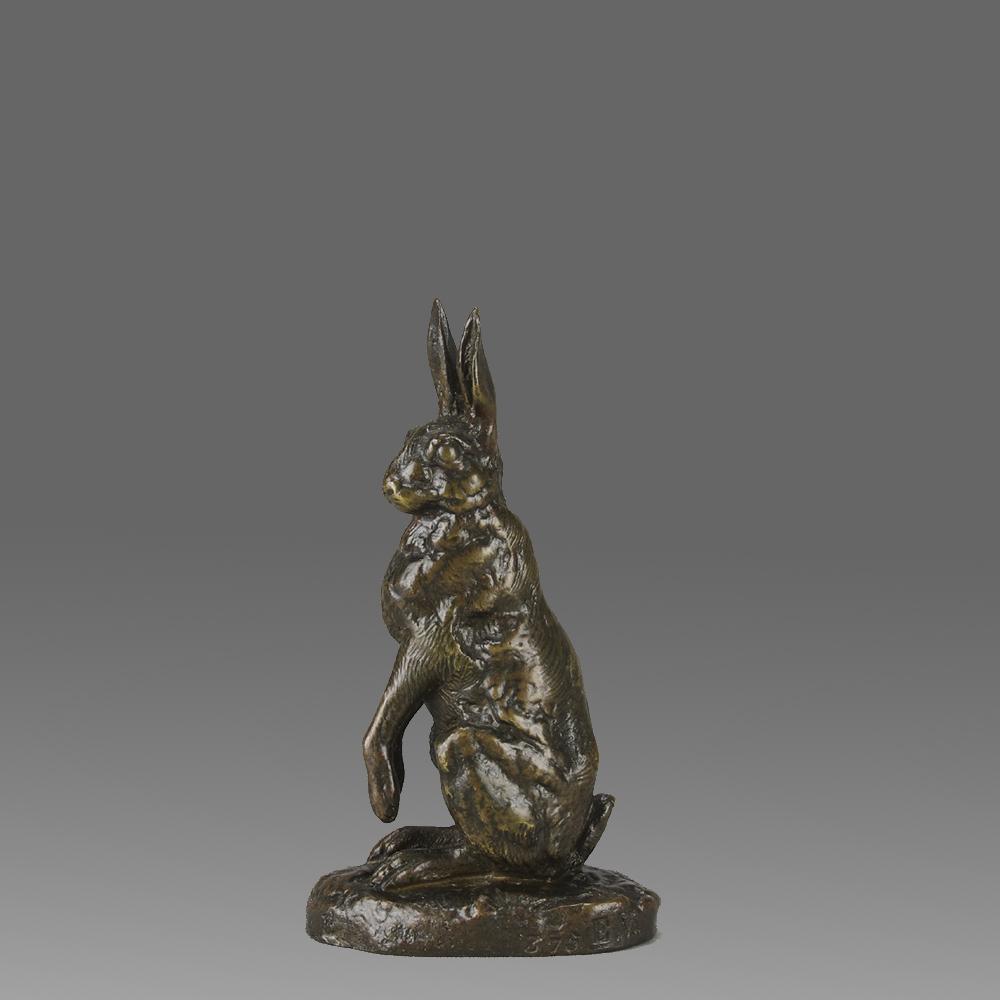
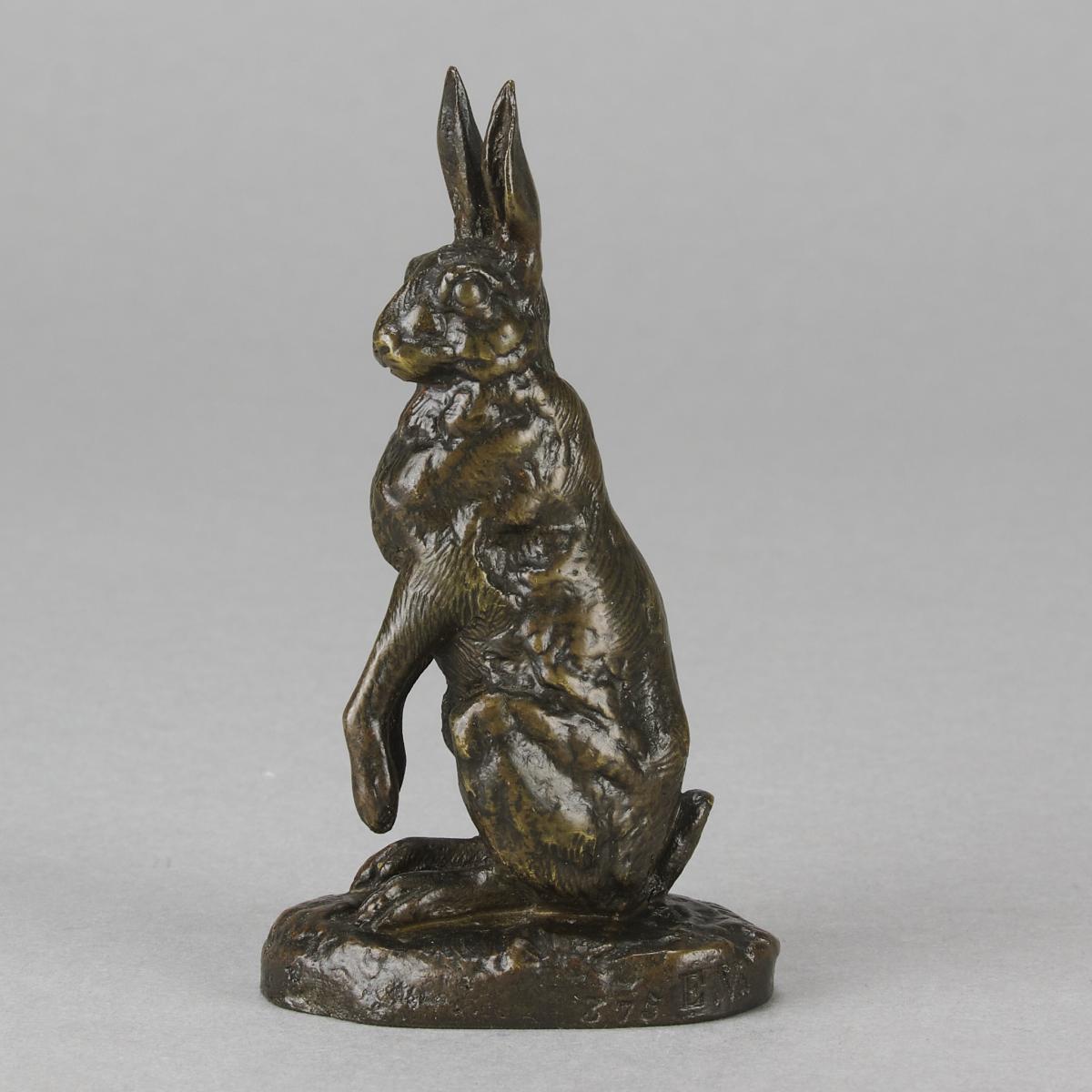
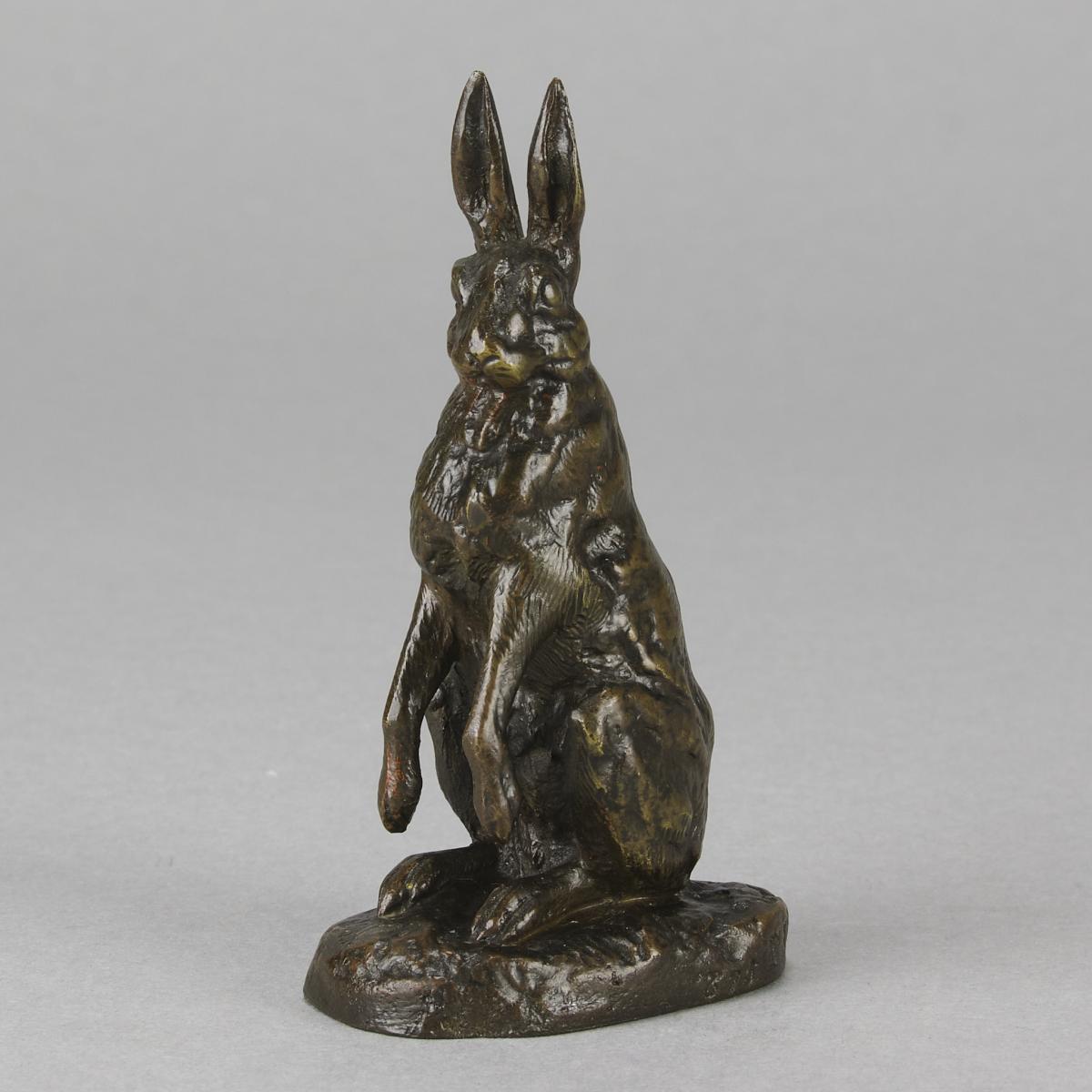
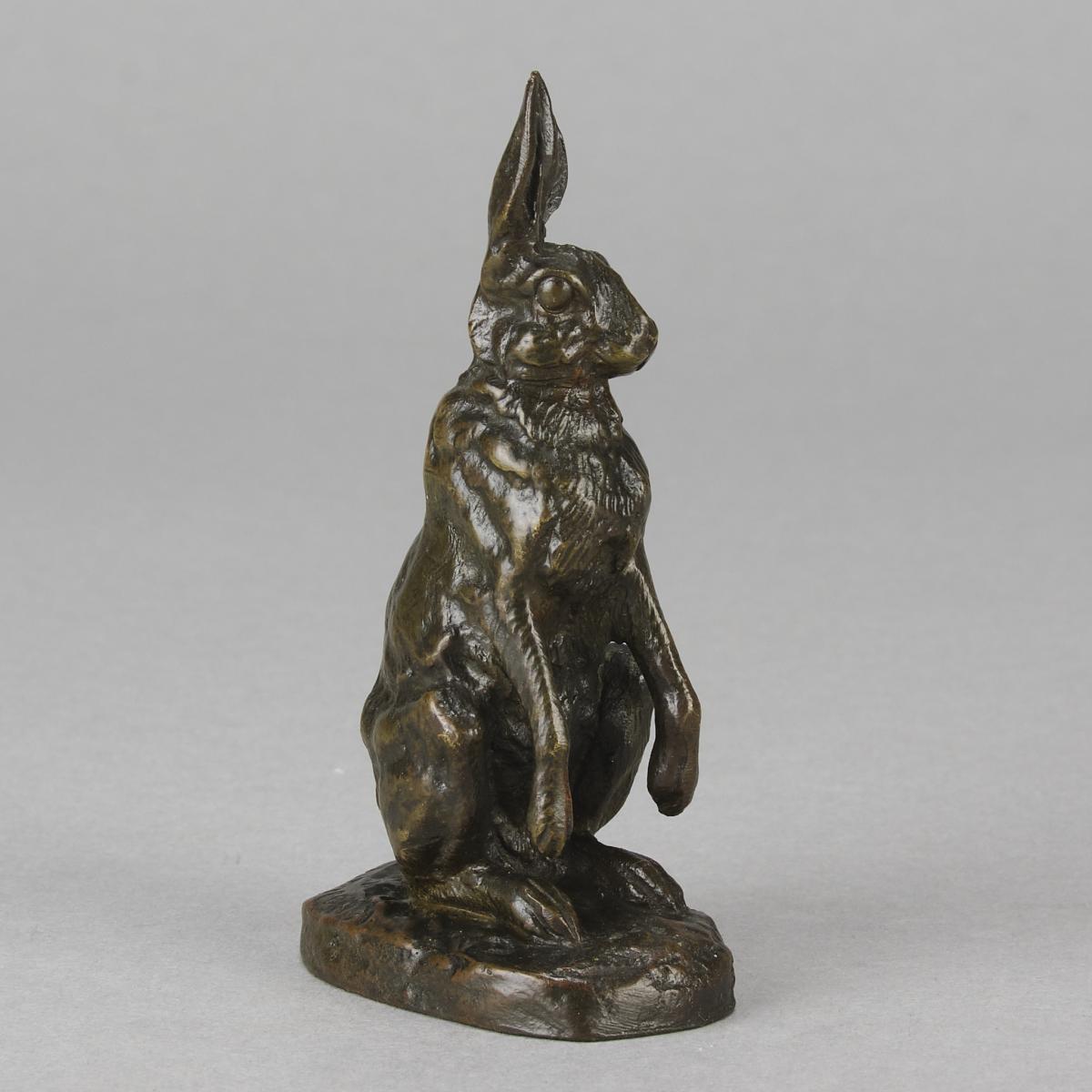
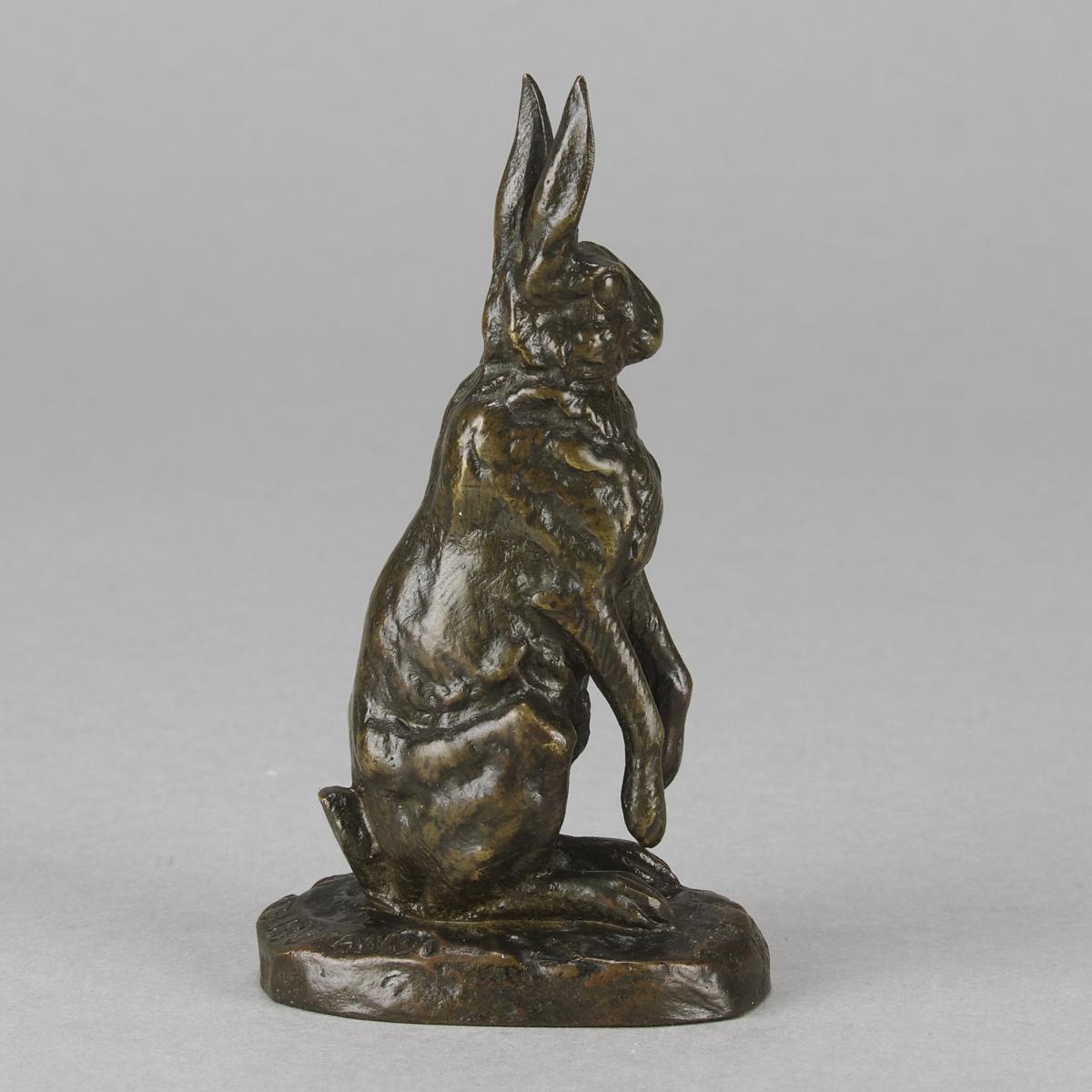
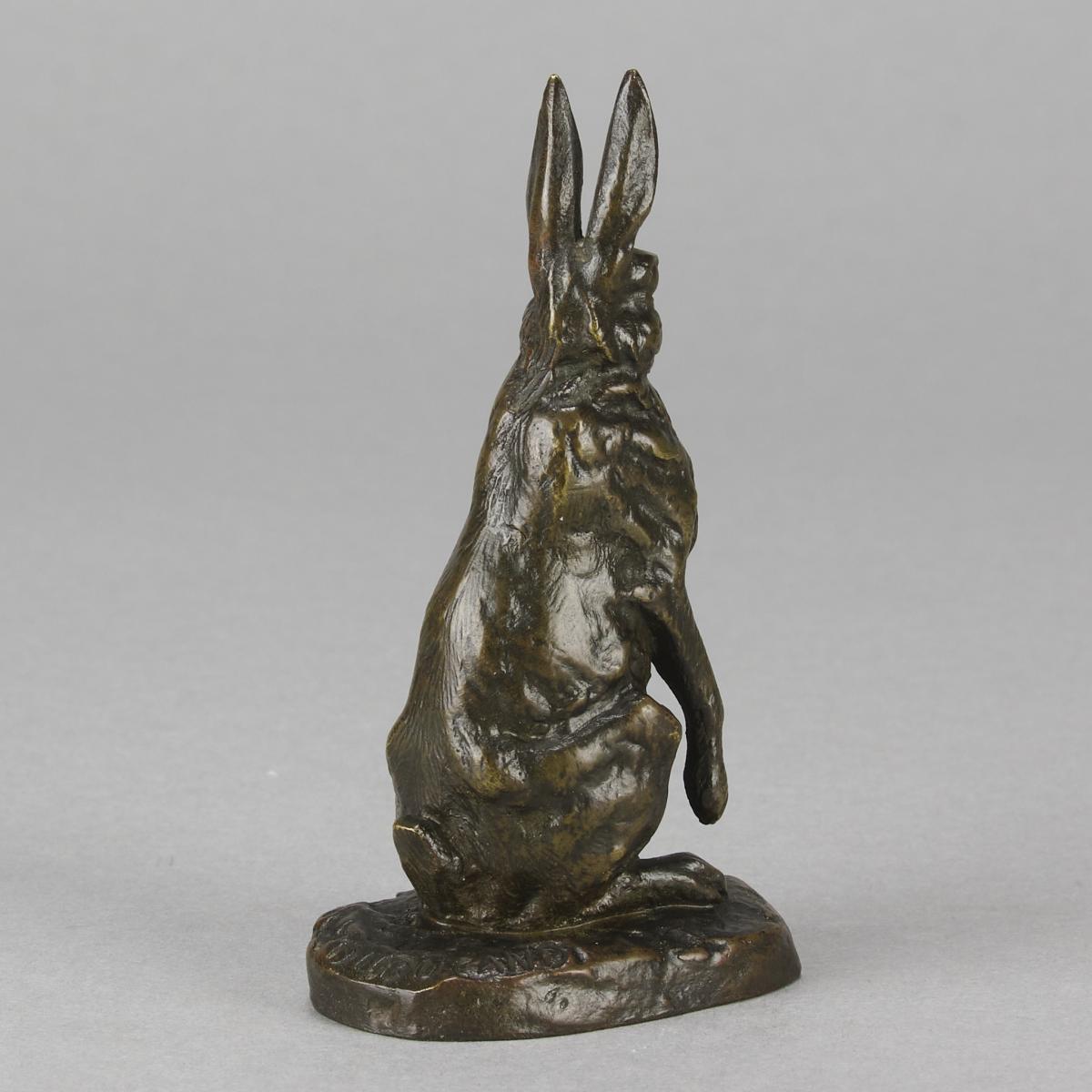
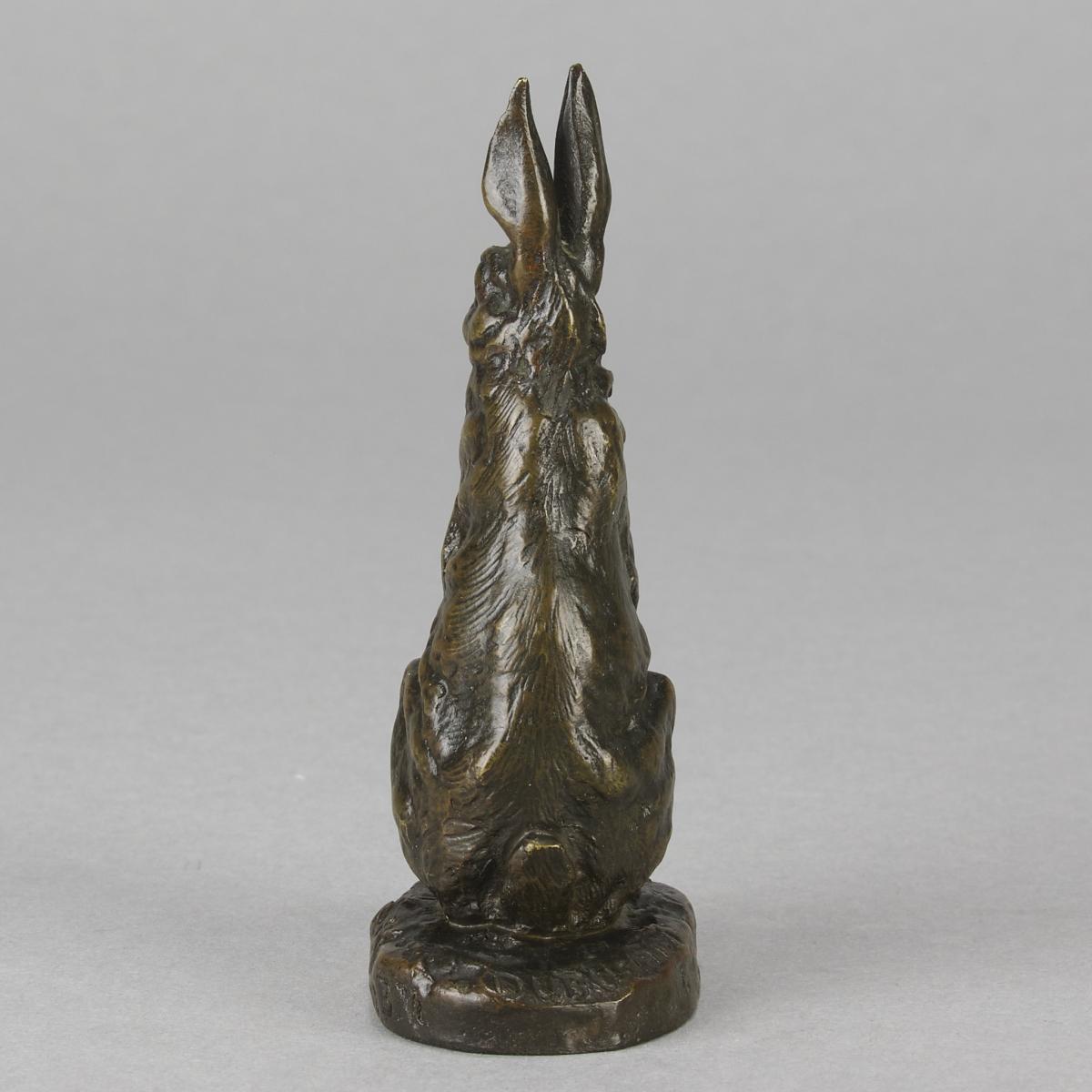
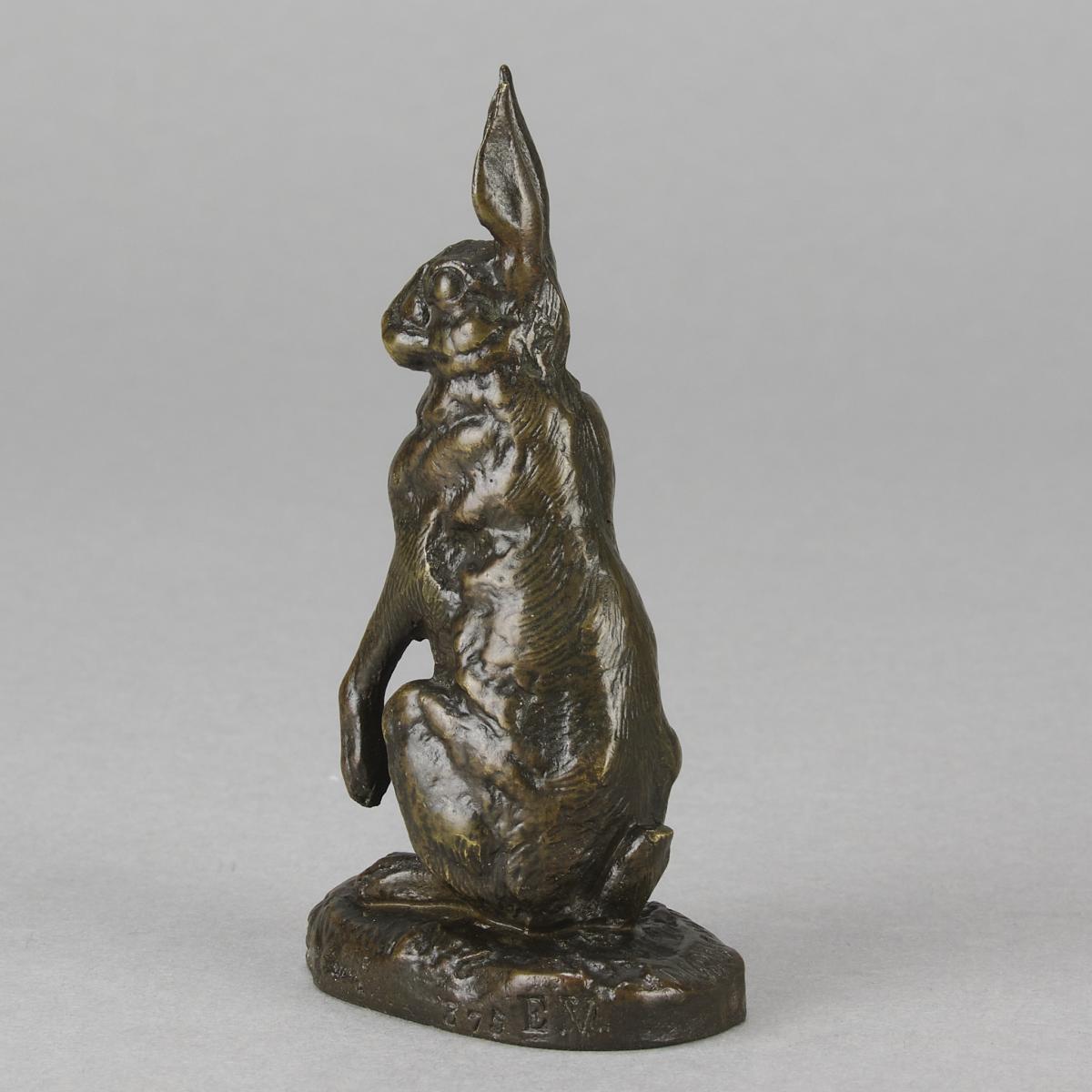
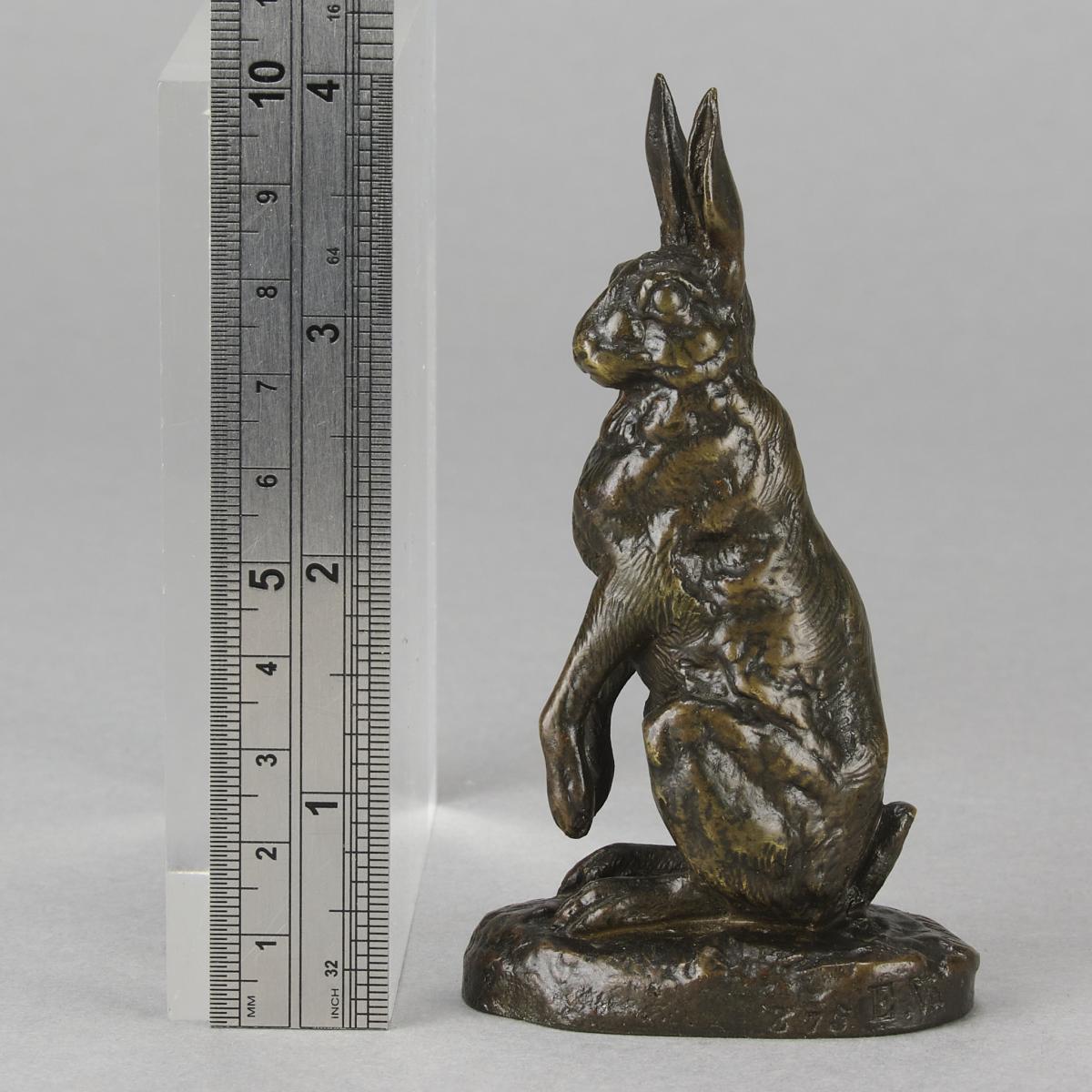
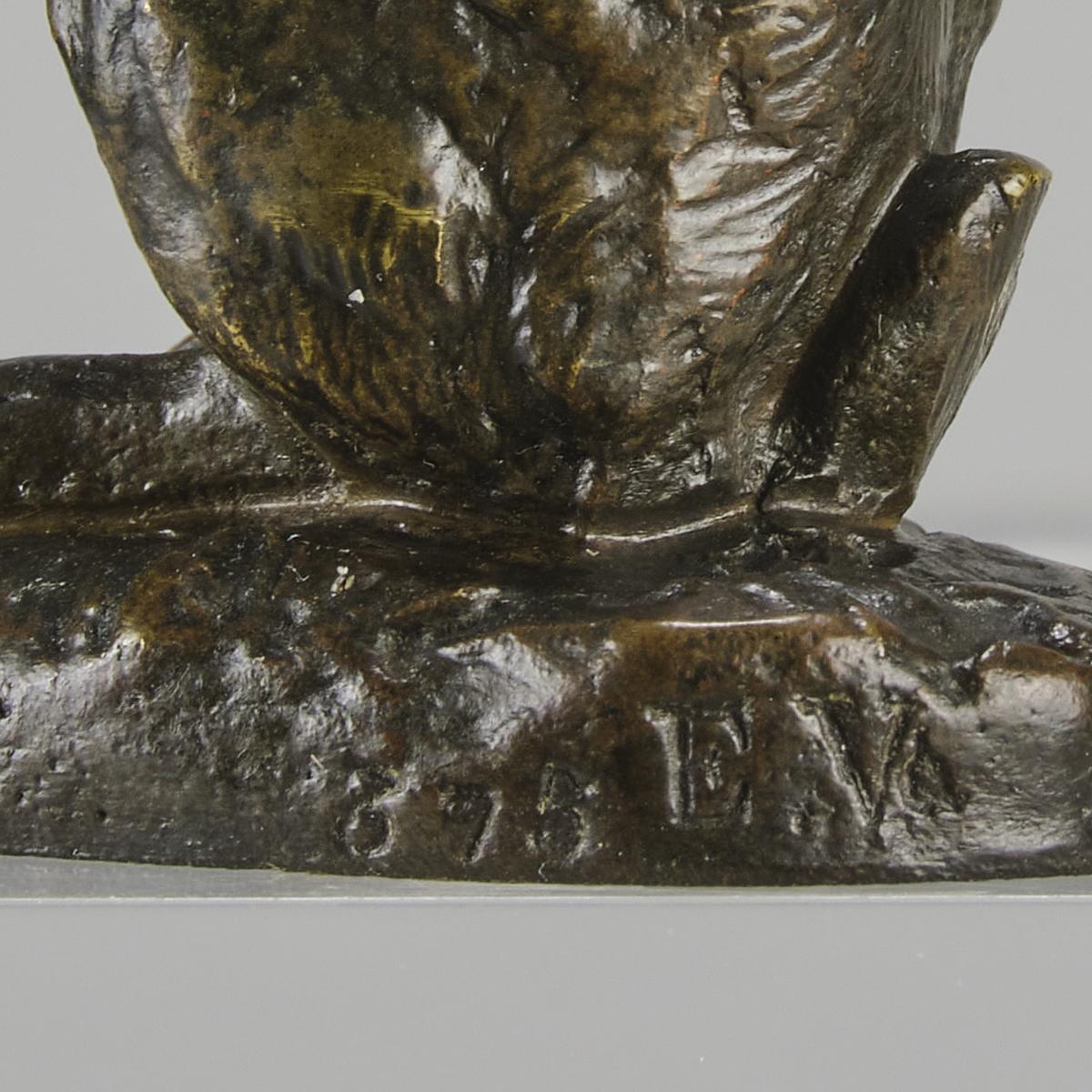
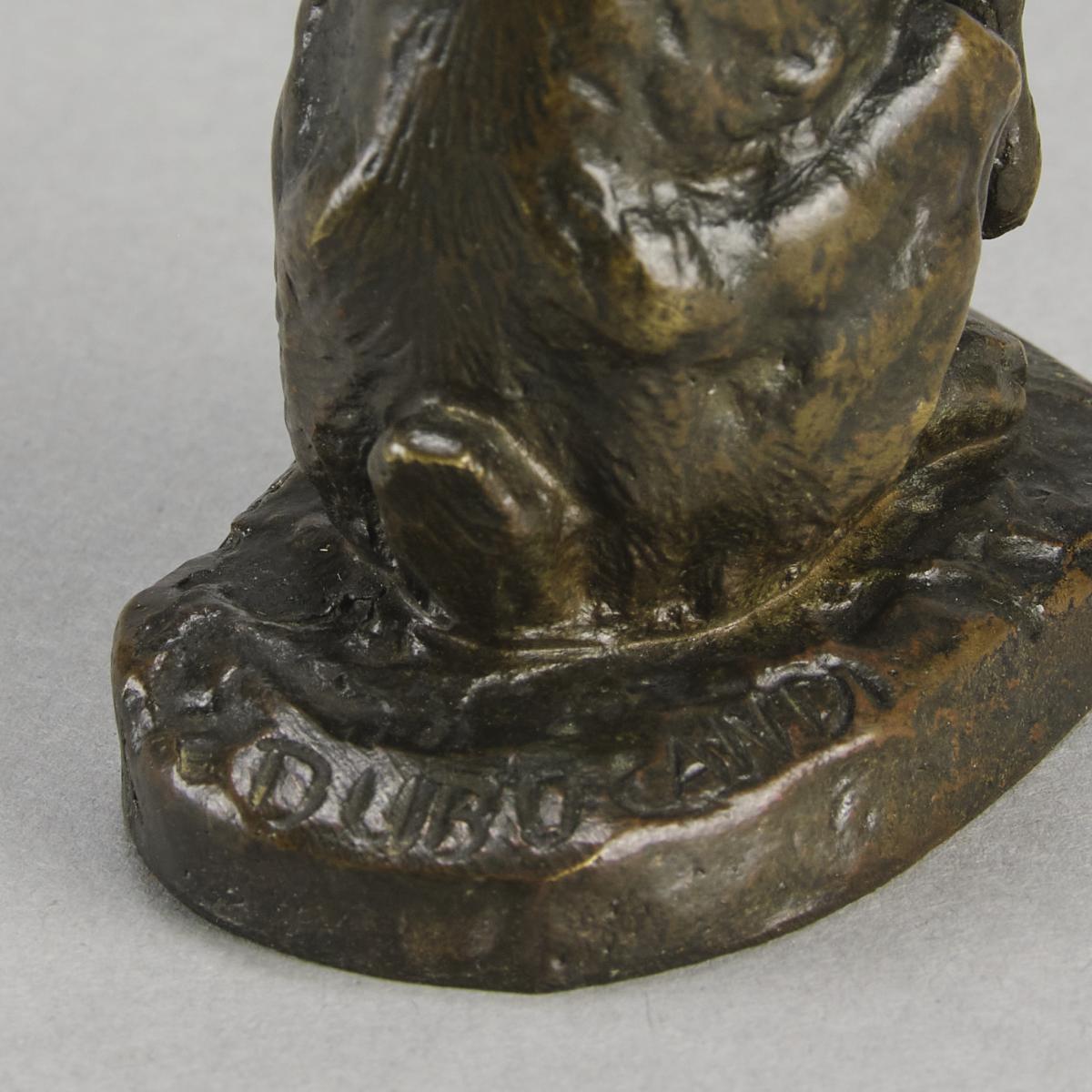
Price
£850.00This object is eligible for a Certificate of BADA Provenance
The BADA Standard
- Since 1918, BADA has been the leading association for the antiques and fine art trade
- Members are elected for their knowledge, integrity and quality of stock
- Our clients are protected by BADA’s code of conduct
- Our dealers’ membership is reviewed and renewed annually
- Bada.org is a non-profit site: clients deal directly with members and they pay no hidden fees
A wonderful late 19th Century Animalier bronze group of a hare resting on its hind legs with its ears raised in an alert position with excellent rich olive green and golden patina and fine hand chased surface detail, signed Dubucand, stamped with the EV Foundry stamp and Numbered 875.
ADDITIONAL INFORMATION
Height: 10 cm.
Condition: Excellent Original Condition.
Circa: 1880.
Materials: Bronze.
Book reference: Animals in Bronze by Christopher Payne.
SKU: 9017.
ABOUT
Dubucand Hare
Alfred Dubucand (25 November 1828 – 1894) Dubucand was born in Paris and was a French animalier sculptor of the 19th century. His works were often entered into the annual Salon art exhibition in Paris where he contributed works over the course of his career. He was one of the prize pupils of Antoine-Louis Barye. Dubucand made his debut at the 1867 Salon with a wax model of a dead pheasant, a rather inauspicious start when considering the higher quality sculptures he would submit later in his career. He modelled mainly animal groups, producing a number of deer, dog, and horse sculptures. His better casts feature a warm, mid-brown patination, sometimes coming in even lighter shades bordering on a very light yellow, being nearly the colour of the bronze metal itself.
He frequently experimented with chemical patinas, learning the patination process from his teacher and mentor Barye who stretched the boundary with his now famous dark green patinas. Dubucand paid strict attention to the anatomical detail of his subjects, often being so concise that he actually showed the veins in the legs of his deer and elk sculptures. Realism was certainly one of his strong points as a sculptor of animals. His animals never appear “frozen” and he was able to portray each animals’ natural movements and stances. He created his original work in wax and then would cast his pieces in bronze in what is called the lost wax casting method, although some of his work was completed using the sand casting method. Many of his orientalist sculptures feature North African scenes portraying Arab tribesmen and nomads aboard horses and camels. Although he would live for another eleven years, Dubucand’s final submission to the Salon was Cavalier et femme arabes à la fontaine in 1883.
Stock number
9017The BADA Standard
- Since 1918, BADA has been the leading association for the antiques and fine art trade
- Members are elected for their knowledge, integrity and quality of stock
- Our clients are protected by BADA’s code of conduct
- Our dealers’ membership is reviewed and renewed annually
- Bada.org is a non-profit site: clients deal directly with members and they pay no hidden fees


